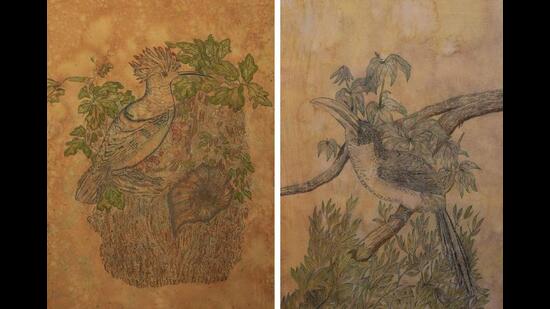Wildbuzz | Who heeds the hoopoe’s call
Hoopoe’s declining visibility is palpable in Punjab, where the bird enjoyed richness of association in culture, folk song, idiom and ultimately as a symbol of the state itself.
We did not have to scout the jungle or take a tour of remote Harike to marvel at the Eurasian hoopoe. This bird, which enjoys a global resonance, afforded views from the window or a walk in the park.

A hoopoe charmed viewers with its habit of digging soft ground systematically with a ‘chimta’ or forceps-like bill, as if searching the earth for a lost, buried treasure. In flight, with its wings, tail and crest open, the hoopoe resembled a large, colourful butterfly endowed with zebra stripes. When the hoopoe rendered a soft, musical hoo-po-po call, it entranced the ear and spawned transcriptions of the vocalisation. Many hoopoe names in cultures across the world take from its idiosyncratic call.
However, the bird’s presence has ebbed from one frequently encountered. It is not that the hoopoe’s decline has evidenced itself in hundreds of bodies strewn around like that of diclofenac-poisoned vultures. The insectivorous hoopoe has been hit by the poisoning of the environment via pesticides / insecticides contamination. The hoopoe’s hormonal balances and ability to breed get affected and numbers decline over time. It is the “perfect murder”, the “invisible hand of humanity” ensures virtually no corpse is ever found. Our children may never get a chance to ask us curious questions about the hoopoe’s curved bill, a crest worthy of a forest noble and indulgence in dusty baths.
Hoopoe’s declining visibility is palpable in Punjab, where the bird enjoyed richness of association in culture, folk song, idiom and ultimately as a symbol of the State itself.
The widely used Punjabi name for the hoopoe is Chakkiraha. “The ‘Chakki’ refers to the small, hand-operated grinder for wheat and other grains to prepare flour. A skilled person roughening a Chakki (millstone) is known as Chakkiraha. The word, rāhā, indicates both the mill-pick tool and the person using it. The act of using a mill-pick, a pointed or edged hammer, is called ‘rāhaṇā’, which has its root in the act of ‘creating a way’, a furrow in a field or a groove in a stone. Thus, the hoopoe, because of its repeated act of probing the ground with its chisel-like bill to search for worms, insects, larvae and pupae got equated with a person using a mill-pick,” Mohali-based Prof. Gurpartap Singh told this writer.
“Another recorded name of hoopoe from the erstwhile Shahpur district (of undivided Punjab), year 1898, is ‘Killi Dhirkhan’. Killi refers to a wooden peg and Dhirkhan (a lingual variation of Tarkhaan) means carpenter. Thus, it literally means a carpenter digging earth to fix wooden pegs,” added Prof. Singh, a birder who revels in a meticulous thumbing of natural history literature.
A common French expression is ‘filthy as a hoopoe’, deriving from the bird keeping its nest dirty and foul smelling to repel predators. “The hoopoe found resonance in a Punjabi proverb to allude to a clueless person to whom nobody pays attention. The translated lines from a Punjabi folk song exemplify this: ‘I wandered in your marriage, Without a clue, As in a carnival, Roams the hoopoe’,’’ explained Prof. Singh. Variations of the proverb compare the hoopoe wandering in the carnival / fair to a person who lands up where he doesn’t belong or has no business to be there, feels lost or bewildered and is ill at ease like an old lady whose voice and presence is obliterated in the merriment and ruckus of a carnival.
The hoopoe attained the zenith of its resonance in Punjab when it was crowned the State Bird on December 1, 1983. The Punjab Government was one of the first to respond to the Government of India’s advisory issued on March 17, 1983, to all State Governments and UTs to adopt a State animal, bird and tree. The hoopoe --- as a commonly-found bird of Punjab, enjoying a rich legacy in culture, and as a friend of the farmer because it rid the soil of grubs, ‘soondis’ etc --- was bestowed the exalted title. For 5.5 years, the hoopoe remained the State’s avian symbol till the Northern goshawk (Baaz) deposed the humbler avian on March 15, 1989, due to the mighty raptor’s association with the Sikh Gurus and as culturally embodying the martial spirit of the Punjab.
vjswild1@gmail.com



